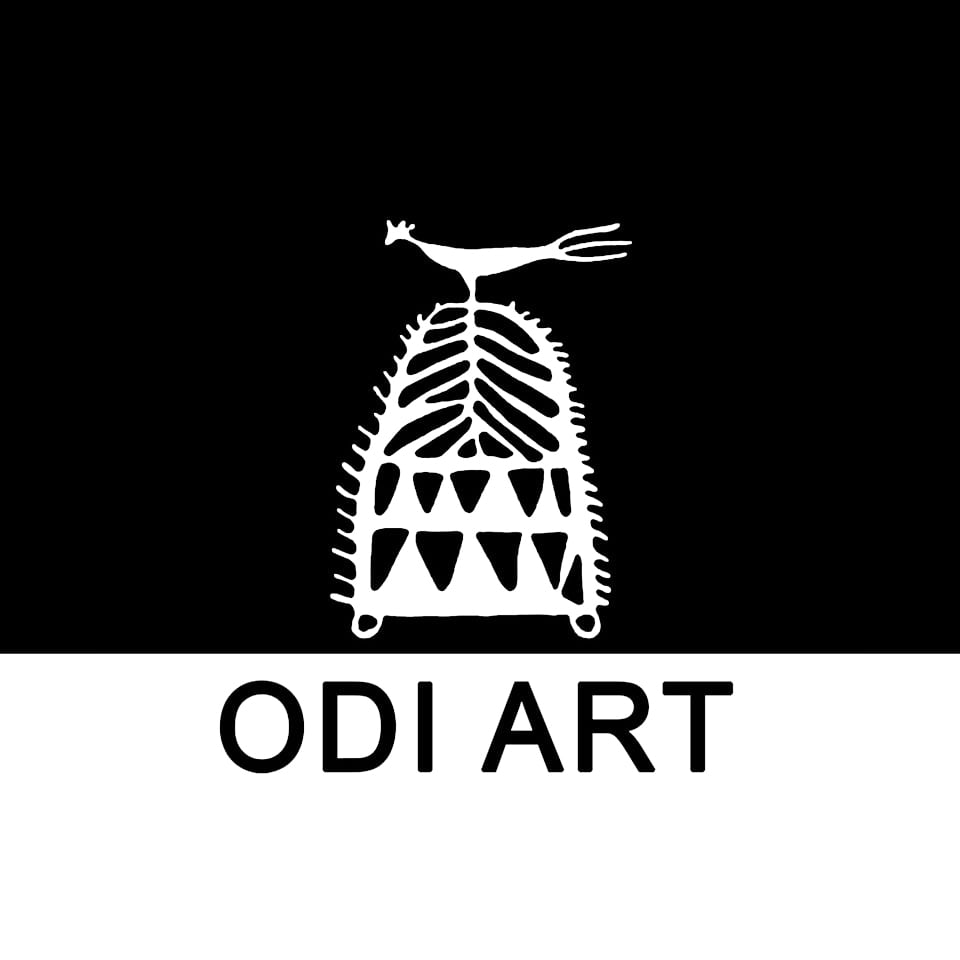Stone Works: Sculpting Poetry from Hard Stone
In the skilled hands of Odisha’s stone craftsmen, poetry emerges from the unyielding embrace of stone. Their mastery and artistic finesse are evident in the intricate carvings adorning the caves of Udayagiri, the serene Buddha images gracing Ratnagiri and Lalitgiri, the enigmatic 64 Yoginis of Heerapur, and the breathtaking stone carvings adorning the walls of the Konark Temple.
The legacy of stone craftsmanship in Odisha is rich and enduring, with artisans belonging to the castes with ‘Maharana’ ‘Mahapatra’ or ‘Sahu’ surname. The stone carver castes while showcasing their expertise, pass it on to next generations in their caste. Utilizing hard sandstone or Khandelite stone, these craftsmen breathe life into their creations, sculpting exquisite damsels, revered Gods and Goddesses, and the iconic wheels of Konark.
Nav Gunjar: The Mystical Animal
The ‘Navgunjara’ in this gallery is made of ceramic, and various parts of its body are joined after firing.
The Navagunjara story appears in the Odia Mahabharata, also known as the Sarala Mahabharata, which is a retelling of the epic Mahabharata in the Odia language by the 15th-century poet Sarala Das. During the Pandavas’ exile in the forest, Arjuna embarks on a quest for penance. While wandering deep into the forest, he encounters a wondrous creature known as Navagunjara.
Navagunjara is a mystical being with the combined features of nine different animals. Its head resembles that of a rooster, its neck that of a peacock, its hump like a bull, its torso like a lion, its waist like a tiger, its legs like an elephant, horse and tiger, and its tail like a serpent. Arjuna, bewildered by this extraordinary sight, raises his bow to shoot the creature. However, before he can release his arrow, a divine voice reveals Navagunjara’s true identity.
The voice explains that Navagunjara is a manifestation of Lord Vishnu, who has taken this unique form to test Arjuna’s devotion and humility. It is a divine lesson for Arjuna to recognize that even the most extraordinary forms are manifestations of the divine. Arjuna bows before Navagunjara in reverence and seeks blessings. Navagunjara, pleased with Arjuna’s humility, imparts divine knowledge and guidance to him, enriching his spiritual journey.
The Navagunjara story serves as a reminder of the boundless forms through which the divine manifests and the importance of humility and devotion in one’s spiritual quest.

